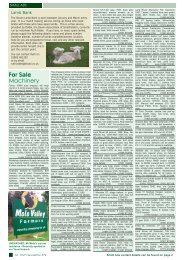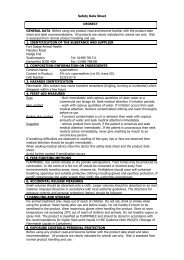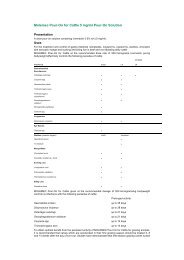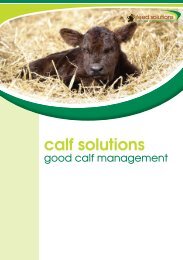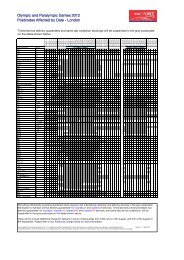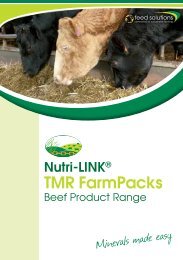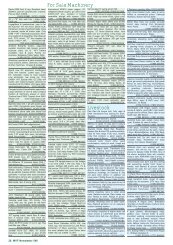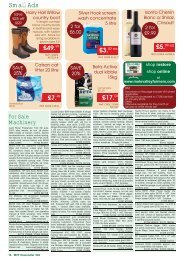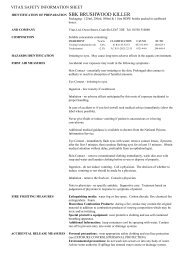MoleValley Calf - Mole Valley Farmers
MoleValley Calf - Mole Valley Farmers
MoleValley Calf - Mole Valley Farmers
You also want an ePaper? Increase the reach of your titles
YUMPU automatically turns print PDFs into web optimized ePapers that Google loves.
New born calves -<br />
meeting their nutrient<br />
requirements<br />
Article by<br />
Dr Jessica Cooke,<br />
Young Animal<br />
Technical Specialist,<br />
Volac International<br />
After colostrum, the next critical feed for<br />
the new-born calf is milk, writes Volac’s<br />
Dr Jessica Cooke. New born calves, like<br />
infants, have a requirement for milk in their<br />
diet until such time as their digestive system<br />
matures and they can digest more complex<br />
feeds.<br />
Whilst the digestive system of the calf develops<br />
relatively quickly, the abomasum (fourth stomach),<br />
still plays the most signifi cant role in digestion for at<br />
least the fi rst three weeks of life. During this period,<br />
milk bypasses the largely non-functioning rumen and<br />
goes straight into the abomasum where acids and<br />
enzymes are secreted to aid digestion. See Fig 1.<br />
Whatever is fed, the physiology of the calf dictates<br />
that, for the fi rst three weeks of life, it is almost<br />
entirely dependent on the liquid milk feed to supply<br />
the nutrients it needs to support health and growth.<br />
Supplying energy<br />
Young calves require energy for normal body<br />
functions such as digestion, respiration and heat<br />
production as well as for growth, and the energy<br />
available to the calf is directly proportionate to the<br />
supply of milk or milk replacer during the fi rst three<br />
weeks.<br />
So, which source of energy is best? Although milk<br />
replacers only contain 14% to 20% fat, compared<br />
Fig 1: Development of the four compartments of the calf’s stomach area<br />
2012 CALF MANAGEMENT GUIDE | MOLE VALLEY FARMERS<br />
<strong>Calf</strong> nutrition<br />
with whole milk at 30% to 32% fat, the lactose content in milk also provides<br />
energy. In total, the proportion of energy supplied by the fat and lactose is<br />
similar for whole milk, skim or whey based milk replacers - over 72%, so all<br />
can provide valuable energy to the calf. See Fig 2.<br />
Fig 2: Relative proportion of energy supplied by different<br />
components in milk or milk replacer.<br />
By supplying more lactose and less fat compared with whole milk, calf milk<br />
replacers typically stimulate earlier intake of solid feed which encourages<br />
earlier rumen development. Feeding whey based milk replacers, which do<br />
not form a clot in the abomasum, can increase early solid feed intake in<br />
comparison with high quality skim based milks.<br />
The fat in whole milk is highly digestible, and well formulated milk replacers<br />
contain a blend of fat sources which are designed to be well digested by<br />
the calf and provide energy and nutrients to help maintain good health<br />
and growth. The processing of the<br />
fats in milk replacers for example<br />
by homogenisation, also has a very<br />
signifi cant impact on the energy<br />
delivered to the calf.<br />
There are occasions when the calf’s<br />
energy requirements are higher, for<br />
example when targeting higher growth<br />
rates, or in periods of cold weather<br />
when the calf needs more energy to<br />
maintain growth. Energy intake can be<br />
improved in various ways but, as shown<br />
in Table 1, increasing the oil content of<br />
the milk replacer from 16% to 20% has a<br />
negligible effect compared with simply<br />
feeding more of the same.<br />
continued on page 4<br />
3




